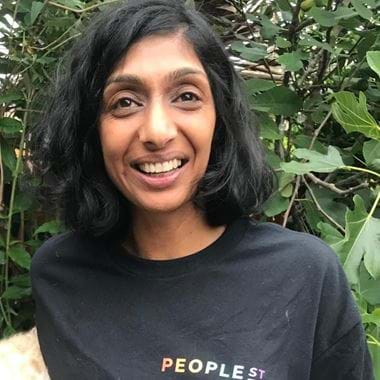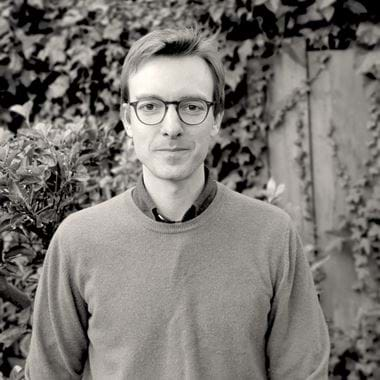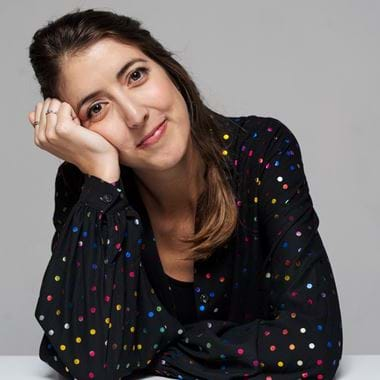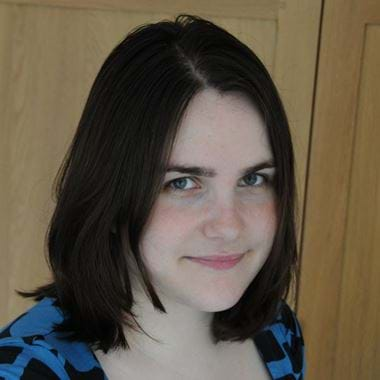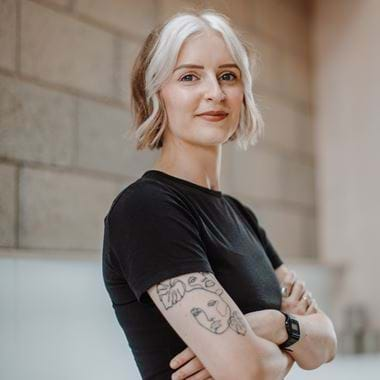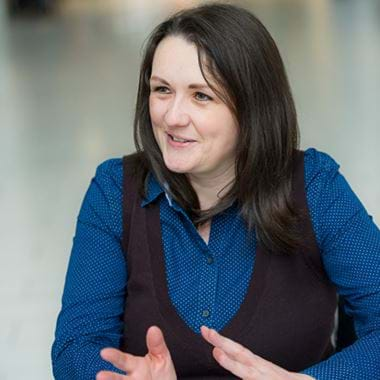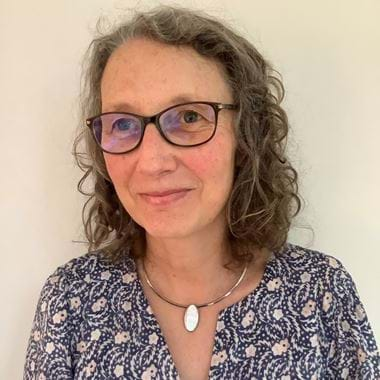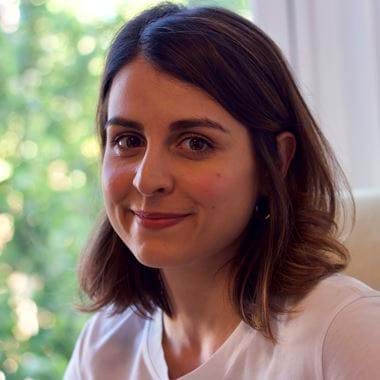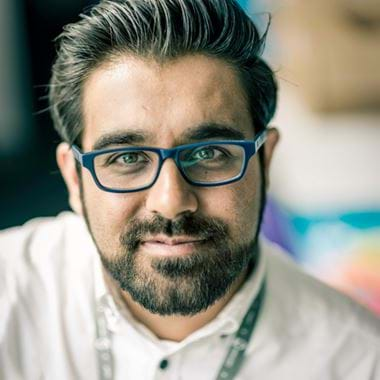
Sharon O'Dea
@300_seconds300_seconds on Twitter
Co-founded by award-winning digital strategist Sharon O'Dea, 300 seconds is a series of lightning talks by and about the digital community.
They aim to give new speakers the opportunity to gain confidence and improve their speaking skills in a safe, supportive environment while also helping to develop their public and digital profile. By offering just five minutes to speak, 300 seconds bridges the gap between attending events and speaking at them with a supportive first step.
Lightning talks: 300 Seconds x Diverse & Equal
Please note: The correct slides for Erere Ikogho's talk can be viewed here.
This year we’ve partnered with 300 Seconds and Diverse & Equal to run a session of lightning talks, with the aim of giving new speakers from underrepresented groups the opportunity to gain confidence and improve their speaking skills in a safe, supportive environment.
It’s also a chance for up-and-coming talent to break into the conference circuit, and by offering just five minutes to speak, this session will offer a supportive first step for those wanting to make the jump from attendee to speaker.
Speakers:
Olubukola Otesile - What am I doing here? Dear Imposter Syndrome...
Erere Ikogho - Enhancing NHS Clinical Quality Improvement: Integrating User Research Skills for Patient-Centred Solutions
Zara Bobat - Being Human in a User-Centered Design Team
Coco Chan and Jessica Riley - Minimum Viable User-Centered Design
Emma Grier - Career Transitions: Embracing Transferable Skills
Millie Mann - Reflections of a Delivery Manager's Journey into Agile Delivery
So hi I'm Sharon, and this is Annette, and what I want to talk about today really, is that owning and telling your story is important, and I would like all of us to commit to doing that ourselves in the future and supporting the people around us to do the same. And this is why. Now when we do speaking like this, partly it's because of communication. So when we communicate, we want people to know something different, to do something different or to feel something different.
And it's one of the ways therefore that we affect change in the world around us. And being able to effectively convey your ideas and share them with others and persuade people to your point of view is critical in all areas of life, and particularly in our work and our professional relationships. But it can also be in our personal relationships too, when we can deliver a message with confidence we can foster better understanding among the people around us. And in that way we change minds and in turn, we change the world around us.
But the other purpose of speaking like this is about influence and power. So public speaking is a path to leadership for many of us. Effective leaders are able to inspire, to mobilise people around them, to engage others. So public speaking is an integral component of our skill set. So whether you're leading a team, you're in a small meeting or a large one, addressing a small audience. Public speaking skills enable individuals to garner attention, to get influence, to convey your vision. So by owning and talking about our work publicly, we become credited with our own ideas, to own our own ideas.
When we do that we build credibility with the people around us and establish ourselves as leaders. We build our reputations, we become familiar faces in our industry, and that's how we can drive positive change in our communities, in our organisations. And that in turn unlocks opportunities for all of us that could be opportunities for jobs, for promotion, for investment and potentially for power. If you're thinking about the world of politics, public speaking is an important and valuable skill for many of us, and to express ourselves, to influence others, and to make a lasting impact.
Hi everybody my name is Annette Joseph, I'm CEO and founder of Diverse & Equal, and so we want to bridge the gap and break the cycle. So we're in 2023 and still today the conversation across our industries and even our politics is dominated by a small homogenous group of people. There are lots of reasons for that. One is that event organisers ask people who have spoken at events before, they want people who have experience.
But people can't get that experience unless someone gives them a chance, but no one wants to chance their event to an inexperienced speaker…Catch-22. So we end up hearing from the same people over and over and over again. Another reason is that, let's face it, we can be reluctant to put ourselves forward. We can be reluctant to put ourselves forward, and Shabira talked about it earlier. About how people experience racism and discrimination, and how they people who do that, they walk past those doors.
Plus generally as a society we are so afraid of public speaking, there's a term for it, it's called Glossophobia, which is believed to affect 75 of the population. So our session today is about bridging the gap and breaking the cycle. If event organisers can make space for these new voices to try speaking as an activity, we can help build confidence and offer up opportunities to gain experience. We start small because the biggest hurdle is figuring out how to process the fear, and once you've proven to yourself that you can speak for five minutes, you can speak for 10 minutes, you can speak for 15 minutes, you can speak for 30 minutes.
So we bring new voices into our industry dialogue, new different diverse voices with stories and experiences that offer fresh perspectives to help all of us learn something new and perhaps spark some new innovation once we've opened these spaces for these new voices. It means that when event organisers are looking for experts to take the stage there's a bigger, broader, more interesting pipeline for them to choose from.
This should mean the end of common excuses like, we asked some women but neither of them were available, fingers crossed, and when it's common to see all kinds of diversity on our stages, perhaps we'll see it in the industry and in our teams too. So standing up more stage like this isn't easy, and the first thing you do is the hardest, but the more you do it the easier it gets. You get more comfortable, you learn to understand how, you know, the physicality of setting up on stage a little bit easier at the time.
So the best thing to do is start with something that is small and manageable and in a nice safe environment, and that's what I think we have here at Camp Digital today. So thank you to Shaun and the team. Today we have six experts in their own fields who are putting themselves out there to take the stage for the first time. They're going to be speaking for five minutes each, that's 300 Seconds, about a professional project, a personal interest.
They put themselves forward, maybe a little bit out of their comfort zone to share their stories with us today. So they've had some support from mentors, from Francis from Chris, and from me as well, so they're taking to the stage, they're beginning that journey from being the audience as you are to standing up on the stage and sharing their story more publicly, in turn becoming maybe more of an active and public voice in our industry in the future. So just so you know, we won't be doing a Q&A afterwards but we would encourage you if you do want to find out more about their projects, their profession, their interests, do go and catch our speakers in the coffee break afterwards. So in the meantime, do give a warm welcome to our speakers today. [Applause]
So our first speaker today is Olubukola Otesile. Bukola um is one of our Diverse & Equal graduates, and she's the Senior BA at Made Tech.
Thank you so my name is Olubukola Otesile. I am Senior Business Analyst at Made Tech. Today I will be sharing my experience of imposter syndrome when I transited into tech, which made me often ask myself ‘what am I doing here?’. You have a bit of poetry by the way. So what do these people have in common? That's my first question. Tom Hanks, Cheryl Sandberg and Michelle Obama. All three at some point in their career have asked that question, ‘what am I doing here?’
They've asked ‘do I belong here?’ ‘am I deserving of my success and accomplishments?’, and that is exactly how I felt when I transferred into tech. In fact Cheryl Sandberg said and I quote ‘There are still days when I wake up feeling like a fraud, not sure I should be, where I am.’ It was good to know that I wasn't the only one feeling this way. In fact, over 58 percent of tech employees experience imposter syndrome. This was found out in a research which included tech employees from giants like Apple, Facebook and Uber. So I started to question where this feeling of imposter syndrome must have come from.
Maybe it was because I didn't have a straightforward career. I started out as a pharmacist, then a public health researcher, a business analyst, and now a senior business analyst. But I thought how could I express to you all how I felt at that point in time.
So my love for poetry, thought I should write a poem to imposter syndrome, but because I lacked the skills, I had to ask my chatbot AI to write the poem. So here it goes.. Uin a realm where lines of codes entwine, Where innovation and dream compile, A black woman stands to redefine, Yet the weight of doubt begins to compile. Imposter syndrome, lurking unseen, An insidious whisper eroding my worth, As I navigate this tech battle ground, I question my place, Asking myself for the umpteenth time “What am I doing here?”, Surrounded by brilliance, I shrink, concealed, As if my voice fades, in the shadows I dwell, Tech’s vibrant tapestry a hue concealed, a struggle to break free from this spell.’
I knew I had to break free from this spell, and so I found out that imposter syndrome robbed me of being my authentic self at work. That conflict between my self-perception and perception others had of me needed to be resolved, so I started embracing my background, I engaged in mentorship, started celebrating my accomplishments and giving myself permission to make mistakes. And most of all I engaged in a mindset shift, and I learned this from Stephen Bartlett who is a judge on The Dragon’s Den. Begin to see the positive in the negative connotation of imposter syndrome, seeing it as a growth moment, a chance for me to grow, a chance of me to make mistakes, a chance for me to challenge myself and be better.
Now I've got the confidence to stare imposter syndrome in the face and say to it ‘Imposter syndrome, I refuse to concede, Within These digits my brilliance unfurls, Determination molds my tech creed, As a black woman, I am the code that swirls. Imposter syndrome, though ever near, shall not define me nor bind my stride, For I am a black woman, resolute, clear, In tech’s vast realm, I shall not hide. Thank you. [Applause]
That was excellent, I feel like a proud mama. And so next we have Dr. Erere Ikogho also from Diverse & Equal bootcamp, cohort number three.
My name's Erere, I'm a user researcher currently at Nexer, and I'm here to talk to you today about integrating user research skills for patient-centered solutions in NHS clinical quality improvement.
So, a bit about me. Officially I'm new to the role. I've been a user researcher for about three months but I've been doing both quantitative healthcare, qualitative and quantitative jealthcare research for the past 10 years. This is a timeline of my face I don't know if you can see how weathered it became in the middle, but I started medical school in 2011 learning about how to interpret scientific literature, reading papers, working as a doctor in the NHS for five years through the COVID pandemic. I then went on to do an MRS in exercise science, got deep into statistics, fell in love with numbers and now I'm a user researcher. This is the most recent picture I could find of myself so I want to share with you today what I see is an untapped potential to improve healthcare practice by bridging the gap between user research skills and quality improvement.
This is not the slide I was expecting at all, but I played with some animation so basically this wasn't supposed to come up here, but let's talk about it anyway. So I think the main thing I wanted to talk about is the purpose of user research in healthcare, and it's to change behaviours of both clinicians in terms of performing or engaging with new tools and products, and the patients that they're there to serve. So one thing that the NHS has done really well is rolling out national screening programs, and I think there's a lot to learn from them so a screening program combs through a population, and it takes a group of people who may be asymptomatic but have a condition, and hopefully it will catch them in that comb.
Where the unaffected population moves through then the effected population may go on to do further tests and depending on the results might need advice, support, treatment or no further action. So basically at some point in time we had to convince people to take out a little card from an envelope, excuse the crudeness, put a little drop of their poo in it and send it in the post.
Now that is not a natural behaviour for me, I don't know about you guys. We had to find a way to make people see their value in doing that, going out of their way to make a change. The reason that these screening programs are so successful is because the design meets certain criteria. So this criteria has been around since 1968 and since then it's like doubled in size, pages and pages. But the thing that I really take from it is that it considers the needs of both the practitioners who have to change their practice and adopt new ways of testing patients and interacting with them and patience to sign up to sometimes what are invasive procedures.
So I was looking at this, and again apologies because these aren't the slides that I was hoping to see, so the program and implementation have criteria that are likely to make them more successful in changing people's behaviour. I think the way that we approach Healthcare projects should also mirror this type of thing so I decided to map out what I think could really make a difference to clinical practice here. And there are things to learn through all stages of the process. So at the start we really need to establish and understand the problems that are faced by all parties so not just the team that you are interacting with I.E the client but also the people that are going to be using your proposed solution.
At the end of the day does it fit into their day-to-day practice? Number two, there should be clear definitions not just into the what but the why and I think this is something that's always missing. We understand that if you've looked at practice and it's not quite there hitting recommendations we say do better, but we don't often explore as clinicians ourselves when we embark on these projects, why? What are the barriers in place and how do we tackle them? The idea is they need to be acceptable to users, and when we say users we mean both the practitioners who will be trying to engage their patients in interacting with a new tool and the patients as well.
We need to be doing more prototyping and working that into our timeline of work, so scheduling an opportunity to have a go at a small sample population and see, does it work beyond the theory? And then always make a schedule and plan to test and retest and monitor the use. This slide decided to pop up now, I don't quite know what's happening. So yeah this just goes to show what we go through so every year, I had to show evidence of contributing to quality improvement and this is the cycle that I'd go through identify the problem. I get given one by my supervisor, define it, who needs to do that.
I collect the data, flicking through notes. At one point it was hundreds of patient notes, analyse it, make some nice pie charts and present it, and that's my implementation. And then someone else will come along and reorder it. And this may horrify you but all of this can be done without me speaking to any other clinician and any patient.
Yeah another slide out of order but this is just to demonstrate what I was talking about in terms of change and change in practice. So you can imagine if I now have recommendations to share I'm going to present them in my department's audit meeting with the aim of making somebody change from not being aware of there being a problem or a need to change practice pre-contemplation all the way down to maintenance. A few slides and pie charts are unlikely to prepare people to take the action to then maintain their change and they are more likely to relapse.
Nice, I would never put images that ugly so you know that this is an I.T failure. So the thing I really want to share with you is that as clinicians we really need your skills. We have no idea what to do when it comes to qualitative research and it's really essential that we integrate good user research in our quality improvement. So things are obvious to you might not be obvious to them, like proper discovery and co-design. I never even heard of those words before I started looking into this field. Solutions need to consider the landscape and they need to be acceptable to all users as I said, again clinicians and patients and just like the audit cycle that appeared, who knows, a few slides ago, we need to be agreeing to and scheduling revisits. We really need to be looking at the impact of the solutions we put in place because otherwise who knows what they're doing with them so thank you
Thank you. So, I just want to say, sometimes I really struggle when things don't go to plan. If you want to read some more I've actually written a long form article where you can actually see things in the order that I wanted, thank you.
Demonstrating the art of the pivot, well done. So now we have Zara Bobat again one of our Diverse & Equal graduates.
Hi everyone, we're good
Hi everyone I'm Zara, a service designer from Nexer Digital, and today I'll be talking to you about what it means to me to be human in the user-centered design team. For some context, I've had the opportunity to work within and lead various teams since the start of my caree,r and it's in the past six to 12 months that I've moved toward user-centered design. During this time I've noticed a few qualities which make for a good team experience.
As someone that's relatively new to the space, I thought I would share my reflections so far, so I'll briefly talk to you a bit about who I am. So I'm a human, I hope. I'm a user of products and services. I'm receptive, attentive, a cheerleader, focused, considerate, and bold. The words that you can see on the screen and that you've heard me say aren't intended to be a giant brag about how brilliant I am, although they have been crowd sourced from various colleagues. The point of this is to show that we're humans, we're diverse and we're varied in who we are. We develop traits in our work life that we bring to our personal life and vice versa. These all make us better team players, better designers and ultimately better humans.
There are three key characteristics which I'd like to talk about. Now the first one is perspective. To me this means being able to look at the situation or context you find yourself in, and look at it from different lenses or viewpoints. I believe perspective is key to building empathy, not only with your team but with your users. Perspective is also important when looking at things from an accessibility and inclusion lens which should be at the forefront of everyone's mind in this day and age. So currently I'm working on a project to do with schools and families and the journeys they take. As someone whose parents came to this country 30 years ago, I know how difficult that process can be for those whose first language isn't English.
I brought this up during one of our team meetings and it was something that we hadn't considered before. Had I not experienced that myself and been in that position I wouldn't have had this perspective on things that I brought to the team, and since then we've made these users a key group that we're talking to. Now the next thing I'd like to talk about is vulnerability, and this is something I wanted to touch on as someone who's never felt they could bring their full self to work. We talk about safe spaces and cultivating a safe space but what does this mean in reality? To me being vulnerable is a key part of that. User-centred design teams, we should be able to be vulnerable we should show others that we're human, we make mistakes we learn from them, but ultimately we're fallible and that's okay.
Making yourself vulnerable and developing trust leads to consideration and compassion from those around you, and that's important. The last thing I want to touch on was awareness, or more specifically self-awareness but that didn't quite fit the theme of one word per side. Having an awareness of what's going on beyond the obvious and questioning this are key traits of user- centered design teams, but to me, awareness goes beyond that. It's being open and receptive, kind and compassionate. It's challenging your own thoughts and biases, it's inclusion, and it's being there to lend a helping hand or a listening ear if you have that space for someone. I'm sure everyone has been in the position where they're new to a team or an organisation or a company, and they're uncertain of what's going on. Everyone seems to be journaling around them but you're not quite there yet. In my experience there's always someone that's aware of that, that is empathetic and that goes out of their way to support you during this time. That to me is awareness.
And so you've heard a lot about me and what makes me human in the user-centered design team. The traits that I mentioned make us human, allow us to empathisee and create trust and be better designers. I'd like everyone to reflect on what makes you human in a user-centered design team and how does this actually play out in reality? What do you do on a day-to-day basis that allows you to be human and help others when you're in the workplace?
Thank you.
Thank you Zara so next we have Coco Chan and Jessica Riley.
Can everyone hear us? Great, thumbs up.
Okay hello everyone, that's very loud. Wonderful to be here with you today at Camp Digital, thank you so much for having us. My name is Coco I'm here with Jess. Today we're here to talk to you about user-centered design. User-centered design is something we practice in our day jobs, we work together in the Civil Service on some really challenging and complex services things like building safety, homelessness, the homes of Ukraine program. Things that really need design thinking and often we're stepping into policy spaces where this is the first time these teams have heard of these concepts and this kind of thinking.
So what we're really interested in and what we're going to share with you a bit today is some of the practicalities of design. How do you make this work in environments that aren't really set up or perhaps ready for this kind of work? And these are some of the barriers, a very small selection of the barriers we've faced when trying to introduce design.
So how many people in this room have heard that top left? Your methods are too slow, you need to deliver this, and like yeah, their kind of ridiculous time frame. Yeah that's very common. Also is how long will it take, and what will we have at the end? That pre-empting solutions before we've had chance to explore the needs and the problems. So we have a bunch of kind of attitudes and all problems or persuading things we have to do, but there are also some really fixed barriers.
Things like we've already announced the date so this is all the time you have, there is no more money and these are all the people, and we might not have all the skills within our team. So we're facing barriers all the time, and some of these things are fixed, we can't negotiate our way out of them. We've got to work out how to adapt our practice to make it fit.
Next slide please. But the good news is there is a way, and we've coined it as this. We call it minimum viable user-centered design. This is what we practice and we describe this as four things. It's doing the best you can with what you have, which might not be much but we're not going to be put off. And it's about building empathy with your users and your colleagues. Your colleagues can be really helpful allies in this if you can bring them into this space.
It's about holding space for conversations and creating those environments for different kinds of discussions and it's about focusing on our concepts, our design values over very specific methodologies and following things kind of exactly step by step. So Jess is going to share with you a prototype we've been working on to kind of describe, or how does this play out for us in our day-to-day. So allow me to introduce our minimum viable user-centered design cards.
And so we started by thinking about, what are the tools and methods that we use on a day-to-day basis to try and design in these kind of tricky contexts, and we wanted to find a way where we could articulate them in a way that was helpful to us, but maybe also hopefully helpful to others which is why we're here today. So these tools are a mix of things that we've sort of iterated on from in our own work, but also things that we've brought and kind of borrowed from others work that we think are really effective too. So these three cards here are focusing on methods that we think might be helpful to help you and your team take a use a certain sort of approach to their work.
And so each card you can see has a title and a superpower, so just a kind of quick summary of why we think it's helpful, and what it can help you do. A context score so we thought this might be a helpful way to start thinking about which methods you might want to use, and when depending on your context, so how much time you might have available and how confident the team is that you're working with in terms of user-centered design, and also the clarity. So touching on that that point of how clear is the problem in front of us, and how much do we have to do at the bottom as well, we also included a kind of a summary of practicalities. So how much time it might it take you to run this method or use this tool whether it's an individual activity or a full team activity, or whether it's something you can do online and in person. And we expect to add to these cards.
So just to quickly run you through the kind of three methods that we chose to start with. So the first one is use a target. It probably looks quite familiar to most people here. It's a kind of it's a riff on stakeholder mapping and this is something that I personally found really useful as a sort of entry-level activity with teams that perhaps haven't ever really talked about users before. You know they might be talking about customers or stakeholders, but not ever really users, so this is a really helpful method to get teams to start talking firstly about who the users are, and also understand what we mean by the term users.
And really sort of thrash that out at the beginning. It also can be done quite quickly at the beginning of a session so it's a really good one. The second one is exclusion busting. So we've heard a lot about that today, and this is based on the Microsoft Persona Matrix. And using this along with something like empathy mapping for example we think is a really good way of perhaps a slightly more mature team in terms of UCD to really start sort of challenging their own perceptions on their users. And the third one is co-research and synthesis. So this is about a team that perhaps has more time and resources available to them, who can join you in the design and research sessions and actually start really hearing firsthand some of those experiences. And we've seen this be really powerful in terms of kind of having real impact in the way that teams are thinking about the problem that's in front of them.
So our mission is to continue developing these prototypes. This was a conversation that started that escalated, and here we are today so we want to continue developing, keep talking about it and keep building on it with our experiences, but also experiences of others, and hopefully some of you here today. So if you're interested and you want to help us please do let us know come and chat we'd love to hear from you thanks very much.
Thank you so much. So next up we have Millie Mann who is a senior delivery manager. Thank you Millie.
So I'm going to try and adjust , need a little stool.
Okay, all right. I'm going to point it downwards, that makes me feel a bit better. Cool thank you so much I can actually see everyone now, thanks.
Okay, it's great to be here and it's really inspiring listening to everybody else that's gone through their talks already. I love the whole MVP of user-centric design so totally going to have a conversation about that at some point. So my talks about reflections on…oh it seems to be doing its own thing now. Okay, I didn't touch it. Maybe it's the wind, who knows. So yes my talk is about my journey into agile, and the delivery of regulatory apps.
So I'm a senior delivery manager working for CQC the Care Quality commission, that's a regulator of Health and Social care in England. And yeah, that's what I'm here to do. So what I'd like to start off with is just talking about how this journey all began. And again it wants to fast forward but we'll take it back. So my journey began, I was a software testing manager for about seven years. And I decided I needed a new challenge so I put myself out there and threw my hat into the ring and said - oh we seem to be having a few tech issues but that's fine, keep going.
I decided to throw my hat in the ring and put myself out there for new challenges.
And lo and behold there was a new challenge that came around I was asked to lead delivery of a regulatory app which would be looking at infection prevention and control for adult social care. And just the information capture of that. And I said yes to that because I was ready to try something new I'd had a taste of agile ways of working. We were going through a digital transformation at the time and I'd learned quite a lot about scrum through that, but it also had a taste for working at PACE during the pandemic, responding to shifting needs in our regulatory approach in apps that we were delivering there as well.
So I always look for the challenge but what I didn't realise was I was actually going to stay in this space. So what was just turning out to be a stretched project was actually my long-term place that I ended up in. As you know, I said I'm a senior delivery manager now but I didn't envisage that and I didn't actually think that agile was something that took place in small pockets of the organisation. My experience had been you had consultants coming in and they were leading the way and telling you how to do things and that you needed a lot of support with that, but we showed that we could actually thrive on our own in our small business-as-usual teams delivering valuable change.
So this is an example of different applications that we've been developing, and this is just basically very small multi-disciplinary teams. Maybe one or two developers, software tester. Very, very small. But we championed agile and we really took hold of new ways of working and adopted that. So my first project was leading on adult social care infection prevention and control. Kind of petrified because the legacy solution was being decommissioned so I had four weeks to deliver this from scratch, and they also wanted an API to automate the publication to the website of the report ratings, and they also wanted data quality and integration with the legacy solutions that we also had.
So it was quite an ambitious task for four weeks but I took it on. So that was very interesting, very time pressured. What I decided to do in this space was take my learnings from previous apps that we'd built during the pandemic where we had to adapt our ways of working. We couldn't go on site to inspect anymore for example, and one of the key things that I really wanted to harness was this concept of a multi-disciplinary team and building that culture to empower the lead roles, the different areas of the team to actually lead on how they would work.
And we did actually deliver it in four weeks. So I think it could have been beginner's luck or was just my absolute fear of failing and not having any solution to move to once the old one had decommissioned. The next project that I looked at was maternities, so we had a high-profile program that was taking place to develop a new methodology to report on maternity safety levels.
We were going to publish this as part of our national state of care report so there's quite a lot of pressure here, and the major problem that we had was that I didn't have anything to copy from this time around it was all new. So policy, legal. All the stakeholders were sat around the same table as me trying to figure out the why and the how themselves, let alone getting into the system requirements which was my bag. So we did have to work together. We carried on with this concept of the multi-disciplinary team and we did actually deliver within seven weeks, which was earlier than what we anticipated to do. And this app actually allowed us to identify a lot of improvement in maternity safety levels. We knew during the pandemic that there were risks there and particularly for women of minority backgrounds, but what we actually found from actually implementing this application was that 89 of the services that we inspected required improvement and we enforced that action.
My last project that I'm going to talk about is mental health observations. So this one's an interesting one because, and this is the power of agile and new ways of working, a director in mental health heard about this maternity app, heard that it was a finalist for Digital Transformation Awards 2023. Didn't win it but it was a finalist. So we'll go with that, for Best Use of Cloud Technology. And they wanted a slice of the pie, and what they were interested in was us developing an app similar to the one that we've done before, but looking at it to try out observation as an approach to getting under the surface of a high-risk Mental Health Service.
We had a lot of pressure on us from parliamentary stakeholders to actually get under the surface of a service that's high risk and understand if it is safe and indeed caring. So we took on the challenge, but I had a new string in my bow. I was trying to think of what the term was there. This time around we'd matured ourselves in our agile ways of working, so Kanban and Scrumban, all of those had been checked out the window because we now had scrum. And I'd invested in becoming a Scrum Master which was very revelationary for me. So we were a lot more disciplined in the ways of working, and we'd also learned how to size an estimate. So we were confident that we could turn this app around within four weeks because we'd done something similar before and we did actually do it within four weeks. And the results are really good and we're getting more and more areas of the business now interested in responding to new ways of working, trying different campaigns to get under the surface of different sectors within Primary Medical Services hospitals and so forth, so whatever lurgy this is it is slowly starting to catch on.
So one of the highlights for me has been working in a multi-disciplinary team. And what I really loved about this third project was that by this time our team were quite empowered and confident and they actually innovated and accelerated to launch this app, which meant that we cut down development time from what would take two days to two hours. So you could already see the confidence building within the team and it was great to be a part of that journey with them.
So in terms of my learnings from where I've been and what I've got from this, there's a few things that I'd like to summarise with. So from the agile side of things, I think that people are at the heart of agile working but you really need that sponsorship to come from the top, and you need that empowerment and encouragement that new ways of working are going to be championed. You need a faster way for decision making. I can't wait one month, I need tomorrow to be the decision date for moving forward.
And certain stakeholders such as legal and policy may not be able to adapt to that, so it's really important that you get them on board with new ways of working and that they can understand the value in doing that. Equally developing that culture of transparency was really important and giving the development team, product management, all of the design leaders a chance to actually think and innovate and come up with concepts and designs to solutions was really really important.
And lastly I think just being able to celebrate success and embrace failure with a view to actually learning from it and doing something different next time when it comes to products and projects. In the agile manifesto we talk about, you know, following a plan isn't as important as actually delivering value, but in my experience we really needed to stick to a plan when we were trying to churn things out for four weeks’ time. So the way I see it is that you should always have a goal, you should always have a scope that's confirmed, but flex that to be able to continuously prioritise, continuously decide which direction you want to go in, and as long as that road map can flex, you will get things done on time and within budget. And hopefully within scope of what the business wanted. Lastly this process. So there's lots of different styles of agile, lots of different flavors of it. I think it's a case of embracing what you're actually interested in, trying it out learning. And then if you want to go down the scrum route it's a bit of an investment, but it's probably worth your while because it will champion all areas of what you need for successful delivery.
In terms of what I learned from my own growth, I learned that I had some hidden talents that I wasn't aware of. So that I could actually lead a multi-disciplinary team. That wasn't something that I really knew I had capabilities of. I also learned that I found joy in marrying up system requirements with business requirements and marrying up the joy on people's faces with a tangible product. So that was fantastic. And I also learned that I wanted to move into this space, so I actually took a change in role and now 16 months later I'm a senior delivery manager managing a team of delivery managers and I genuinely didn't see any of that coming.
Oh I did have a last slide but it's not on here. That's fine. I think the slide fairies are at play today. So what I wanted to just share as a lasting point is that I hope my story resonates with you. I hope the idea of, you know, wanting to work faster to deliver value and taking people on a journey with you is something that resonates, and maybe inspires you to consider. But I also want you to hopefully be inspired that you can mid-career change role and actually still thrive and learn more about yourself in terms of all of that knowledge and experience transferring and translating into new ways of working. Thank you [Applause] Thank you Millie. And last up we have Emma Grier.[Applause]
It might not be as bad as you think you don't have to leave yet.
Hi everybody, and thank you so much for moving the mic as well because that will really help me out too. So my name is Emma Grier. I'm going to be talking today about career transitions and changing career, and some of the things that go along with that. So current stats suggest that we have three to seven careers in our lifetime and an average of about 12 jobs. And that's actually increasing to five to seven careers and going even higher actually for the next generation of workers, so it's highly likely that we will be changing career or industry or role quite frequently.
I recently found a - yep on this is the right side it's fine - I recently found a piece of paper that I'd written on when I was little that said when I grow up I want to act and sing and dance and play with dolphins. So I haven't managed to achieve the dolphins bit, but I did have a big focus on acting in musical theatre when I was little, and that's actually what my first career was and what I trained in.
And I travelled across the UK and Europe performing in the industry. And then during that time I worked as a facilitator, actors often have to have multiple roles. I worked for a number of organisations leading workshops on performance and serious topics like modern slavery and hate crime. Then just before the Covid pandemic I decided to retrain as a coach, which felt like a really big career move, an investment on my part as well investing in that training. And then that took me into career coaching at a further and higher education college and my next role not only involved a move into a different sector, it actually involved a location move from London to Manchester which I'm really pleased about. And I can't stop going on about Manchester now. So then I did an internal move within the same charity organisation to become a corporate partnerships manager which is what I am now.
So throughout the time of my career journey, I believe that these are the skills that I've carried through that journey.Right from the very beginning I think these have been a focus throughout my whole career. In fact, one of my previous hiring managers actually said to me that she knew that I'd be able to learn the knowledge for the role but she knew I had the skills to be able to move into that role and I could pick the other bits up as I went along. But these skills might usually be called soft skills. So personality traits and behaviours that will help candidates get hired and succeed in their work but I would actually argue that by calling them soft skills we're not really appreciating how valuable they are and actually in fact they are key for you to move into your next career
So I think that changing career isn't something to be scared of because we acquire useful skills as we move through our lives and we move through our careers and you're most likely already equipped for what you might want to do next. So we might reinvent ourselves by moving into a different sector or industry or role, but most likely we've already got those key skills and we're already ready for that. So I think the key is finding out what those skills are and utilising those to make your next career move. So it might be quite daunting but you probably already got those skills ready to go so start where you are, use what you have, and do what you can thank you.
